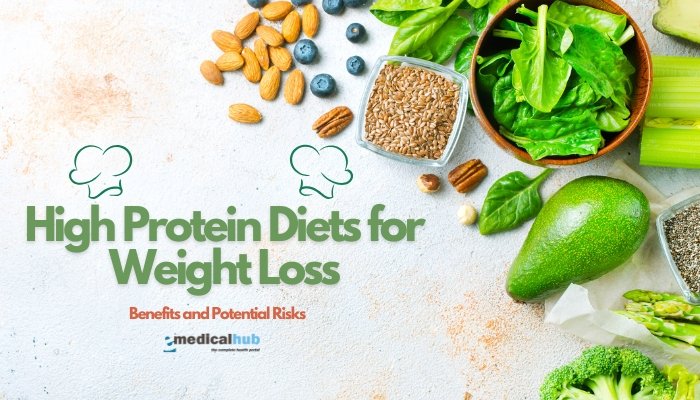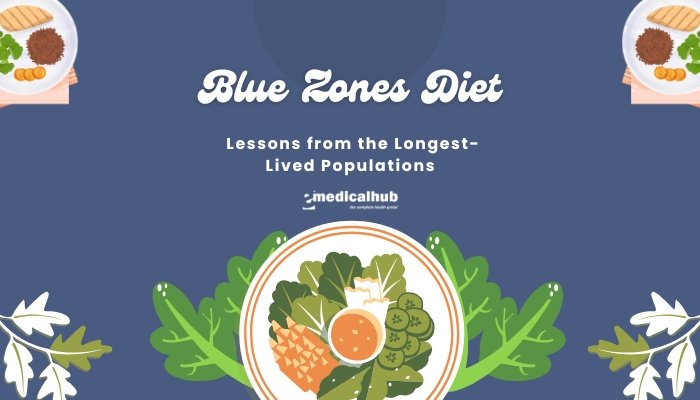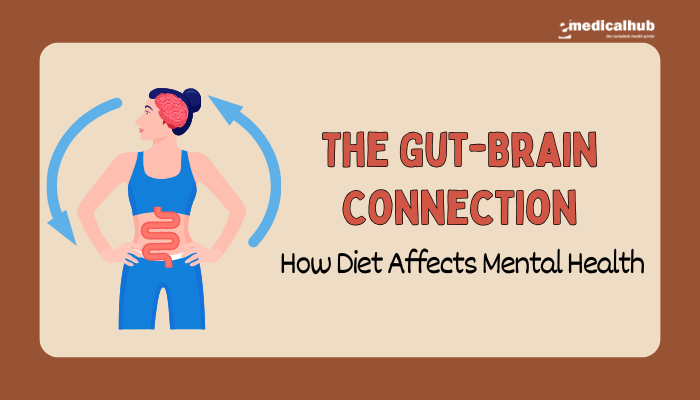Introduction
High protein diets have surged in popularity for people aiming to shed pounds or gain muscle. From well-known plans like Atkins and the Dukan Diet to everyday strategies that center on lean meats, dairy, legumes, and protein shakes, the premise is straightforward.
Eating more protein can help you feel full, preserve muscle, and support fat loss. Yet the approach isn’t without potential caveats. Some worry about strain on the kidneys, possible nutrient imbalances, or difficulties adhering to a high-protein routine over the long haul.
This article examines why protein is crucial for weight loss, explores the benefits and drawbacks of high protein diets, and offers practical tips for safe, effective application. Whether you’re an athlete pushing for optimal body composition or someone simply seeking a healthier relationship with food, understanding how protein affects metabolism, appetite, and overall health can guide your dietary choices. As with any major nutritional shift, it’s wise to combine common sense and personalized guidance, ensuring that your approach remains balanced, sustainable, and aligned with your unique health profile.
Disclaimer: The following information is for educational purposes only. It should not replace individualized medical or nutritional advice. If you have specific health concerns—such as kidney disease, diabetes, or other conditions—consult a qualified healthcare professional before increasing protein intake drastically.
Why Protein Is Important
Protein’s Role in the Body
Protein is composed of amino acids, the building blocks needed for:
- Muscle growth and repair
- Enzyme and hormone production
- Immune function
- Transport of nutrients (e.g., hemoglobin transporting oxygen)
Unlike carbohydrates or fat, the body doesn’t store protein in large amounts; it must be consumed regularly to maintain muscle mass and other critical functions.
Satiety and Metabolic Advantage
Compared to carbs or fats, protein is often more satiating:
- Appetite Regulation: Protein influences hunger hormones like ghrelin and GLP-1, making you feel fuller longer, so you’re less inclined to overeat.
- Thermic Effect of Food: The body expends more energy digesting protein than other macronutrients, modestly boosting calorie expenditure.
This dual effect—reduced hunger and slightly increased calorie burn—explains why higher protein diets commonly support weight management.
High Protein Diets: Defining the Approach
What Counts as “High Protein”?
The Recommended Dietary Allowance (RDA) for protein in adults is about 0.8 g of protein per kilogram of body weight per day (or roughly 0.36 g per pound). However, this standard covers minimal needs to prevent deficiency, not necessarily to optimize weight loss or muscle health. Many high protein diets recommend:
- 1.2 to 1.6 g of protein per kg (0.54–0.73 g per lb) for weight loss or athletic performance.
- Some extreme regimens exceed 2 g per kg (0.9 g/lb), but long-term safety or necessity at these levels is debated, especially for non-athletes.
Various High Protein Strategies
Common variations include:
- High Protein, Moderate Carb: Emphasizes quality protein sources (lean meats, fish, legumes, dairy) while allowing moderate, whole-food carbohydrates.
- Keto-Like: Very high fat, moderate/high protein, minimal carbs. However, true ketogenic diets sometimes emphasize fats more than protein.
- Paleo: Encourages unprocessed foods, typically featuring higher protein from meats, fish, eggs, nuts, seeds—though amounts vary.
- Plant-Based High Protein: Seitan, tofu, tempeh, lentils, beans, or peas as protein staples for vegetarians or vegans aiming for elevated protein intakes.
Benefits of High Protein for Weight Loss
Enhanced Satiety and Reduced Cravings
Protein’s effect on satiety hormones helps curb the drive to snack or binge. Studies repeatedly show that diets with 25–30% of calories from protein can:
- Decrease late-night cravings
- Decrease the desire for frequent snacking
- Support meal-to-meal satisfaction
Preservation of Lean Muscle Mass
During weight loss, the body risks catabolizing muscle along with fat. Adequate protein helps preserve or minimize muscle loss, which:
- Maintains metabolic rate (muscle burns more calories at rest than fat).
- Prevents strength decline and ensures better physical function
Positive Body Composition Changes
Weight loss success is about fat loss, not merely scale weight reduction. Higher protein fosters a greater percentage of fat tissue loss relative to muscle, leading to improved body composition and a toned physique.
Potential Metabolic Advantages
Some research suggests increasing daily protein from 15% to ~30% of total calories might result in increased daily calorie expenditure by ~80–100 calories, partly due to the thermic effect of protein and changes in appetite hormones.
Potential Risks and Downsides
Kidney Concerns
One common worry is whether a high protein intake strains the kidneys, especially for those with pre-existing kidney disease. For healthy individuals, moderate to moderately high protein diets are generally safe. But those with impaired renal function should:
- Consult with a nephrologist or dietitian about protein limits.
- Monitor kidney function (e.g., eGFR, creatinine levels) regularly.
Nutrient Imbalances
Focusing heavily on protein may inadvertently reduce:
- Fiber (if carbohydrate intake from whole grains, fruits, or vegetables diminishes).
- Vitamins and Minerals abundant in varied plant-based foods.
If the diet includes mostly animal proteins and fewer plant-based foods, one might risk lacking certain antioxidants or beneficial phytonutrients. The solution: maintain a balanced variety of protein sources and keep up vegetable/fruit consumption.
Excessive Saturated Fat
A high protein plan might turn into a high saturated-fat plan if heavily reliant on red meats, processed meats, or full-fat dairy. Excess saturated fat can raise LDL cholesterol and risk cardiovascular disease. Opt for lean cuts or fish, limit processed red meat, and incorporate plant-based proteins for improved fat quality.
Digestive Issues
Suddenly boosting protein can cause gastrointestinal distress, like constipation if fiber is neglected. Drinking enough water and ensuring a balanced intake of vegetables and whole grains can mitigate this.
Safe and Balanced Approaches to High Protein Diets
Aim for Lean or Plant-Based Proteins
Instead of daily bacon or fatty steaks:
- Lean Poultry (chicken, turkey)
- Seafood (salmon, sardines, tuna) for Omega-3 fats
- Egg Whites or Whole Eggs (in moderation)
- Plant Proteins: Lentils, beans, tofu, tempeh, seitan—offering fiber, micronutrients, and no cholesterol
Distribute Protein Throughout the Day
Your body builds and repairs muscle more effectively if protein is spread across meals, e.g., aiming for 20–30 grams per meal. This ensures muscle protein synthesis is consistently stimulated rather than lumping protein in one big dinner.
Pair with Enough Veggies, Fruits, Whole Grains
Balancing macros:
- Complex Carbs: Provide fiber and stable energy, e.g., oats, quinoa, brown rice.
- Ample Veggie Intake: Deliver vitamins, minerals, antioxidants, plus synergy for overall health.
- Healthy Fats: Avocado, nuts, seeds, or olive oil can round out a balanced high protein meal.
Consider Supplements Carefully
If meeting protein demands from whole foods is challenging, whey, casein, or plant-based protein powders can fill gaps. However, read labels for quality and moderate use—avoid excessive reliance on supplements at the expense of real foods.
Additional Health and Lifestyle Factors
Exercise Synergy
High protein diets align well with resistance training or mixed exercise regimens to amplify muscle gain and metabolic benefits. Strength workouts accelerate muscle repair, using protein for hypertrophy, thus boosting resting metabolism.
Mindful Eating and Calorie Deficit
Even on a high-protein plan, total calories matter. Overeating high protein foods can still sabotage weight loss. Mindfulness around portions, hunger signals, and overall caloric intake remains crucial. Aim for a moderate caloric deficit if weight reduction is the goal.
Regular Health Monitoring
Track metrics such as body composition changes, lipid profiles, kidney function, and general well-being. A diet that’s beneficial for one person might cause issues for another, especially with higher protein demands.
Sample Meal Plan (High Protein, Balanced)
Here’s a rough daily outline (approx. 1,600–1,800 calories, depends on portion sizes):
Breakfast
- Egg-white scramble with spinach, onions, mushrooms (or whole eggs if desired).
- Side of fresh berries.
- Cup of coffee or tea (no sugar or minimal sweeteners).
Mid-Morning Snack
- Low-fat Greek yogurt or cottage cheese with a sprinkle of nuts and seeds.
Lunch
- Grilled chicken breast (around 4–5 ounces)
- Mixed green salad with cherry tomatoes, cucumbers, olive oil, and vinegar dressing.
- Whole wheat or sprouted grain bread slice (optional).
Afternoon Snack
- Apple slices and almond butter, or a protein shake using unsweetened almond milk, containing ~20–25 g protein.
Dinner
- Salmon fillet (4–5 oz) or tofu stir-fry for a plant-based version.
- Quinoa or brown rice (small portion, ~ ½ cup).
- Steamed broccoli or zucchini, lightly seasoned.
Optional Evening Snack
- Casein protein shake or a small portion of cottage cheese for slow-release protein overnight.
- Alternatively, fresh fruit if focusing on lower protein at night.
Real-World Examples: Different Body Types or Goals
Sedentary Individual with Mild Overweight
- Goal: Gradual weight loss.
- Strategy: 1.2 g/kg protein daily, reduce refined carbs, ensure daily vegetables. Maintain a mild calorie deficit (~200–300 below maintenance). This helps spare muscle while losing fat gradually.
Fitness Enthusiast or Bodybuilder
- Goal: Retain/gain muscle while leaning out.
- Strategy: 1.6–2.0 g/kg protein, timed around workouts, incorporate either a moderate or lower carb approach. Combine with intense strength training, supplements like whey or casein, and track macros carefully.
Middle-Aged Individual with Mild Hypertension
- Goal: Weight reduction and manage blood pressure.
- Strategy: High protein but focusing on fish, poultry, legumes, and low-sodium flavors. Avoid high-sodium cured meats. Add potassium-rich produce. Enough dietary fiber is crucial to balance potential constipation issues.
Frequently Asked Questions (FAQ)
Is it safe to maintain a very high protein intake (e.g., more than 2 g/kg daily) long-term?
For healthy kidneys, short bursts can be tolerated (common in bodybuilders). Yet, the necessity and safety of maintaining very high protein for months or years is controversial. It’s generally recommended to keep it in the 1.2–1.6 g/kg range unless you have special athletic demands or professional guidance.
Can high protein cause kidney stones?
Diets heavy in animal protein might increase stone risk due to higher acid load and changes in urinary excretion. Balanced fluid intake, adequate fruit/vegetable consumption, and moderate protein levels can mitigate this risk.
Are plant-based proteins sufficient for a high protein diet?
Yes. Combining legumes, tofu, tempeh, seitan, nuts, seeds, and protein-fortified foods can meet high protein goals. Mindful pairing of complementary proteins ensures full amino acid profiles.
Do I need protein powder?
Not necessarily. If you can get enough protein from whole foods, that’s ideal. Powders are convenient for busy schedules or bridging protein gaps. Quality selection and usage in recommended doses is important.
Will high protein alone build muscle without exercise?
No. Adequate protein intake helps preserve muscle, but muscle gain depends on resistance training or physical stress. Without that stimulus, extra protein won’t magically produce new muscle mass.
Conclusion
High protein diets have shown promise for supporting weight loss, muscle preservation, and satiety. Research indicates that increased protein intake can boost metabolism slightly, keep hunger at bay, and aid in maintaining lean mass during calorie deficits. However, it’s crucial to approach these diets responsibly—focusing on lean or plant-based protein sources, ensuring variety to avoid micronutrient gaps, and not ignoring overall energy balance. Also, those with pre-existing kidney conditions or specialized health issues should consult healthcare providers before significantly raising protein intake.
A balanced, moderate approach that includes an array of vegetables, whole grains, healthy fats, and adequate fluids is foundational to any diet. For many, simply emphasizing protein at each meal—rather than adopting extremes—produces real benefits in appetite control and body composition. Combining this with regular exercise, mindful eating, and a sustainable meal plan can yield lasting weight management and improved metabolic health. Ultimately, high protein diets can serve as a useful tool, but they function best within a well-rounded lifestyle that respects both nutritional diversity and personal health constraints.
References
- Phillips SM, Chevalier S, Leidy HJ. Protein “requirements” beyond the RDA: implications for optimizing health. Appl Physiol Nutr Metab. 2016;41(5):565-572.
- Layman DK, Anthony TG, Rasmussen BB, et al. Defining meal requirements for protein to optimize metabolic roles of amino acids. Am J Clin Nutr. 2015;101(6):1330S-1338S.
- Antonio J, Ellerbroek A, Silver T, et al. A high protein diet has no harmful effects: a one-year crossover study in resistance-trained males. J Nutr Metab. 2016;2016:9104792.
- Noakes M, Keogh JB, Foster PR, et al. Effect of an energy-restricted, high-protein, low-fat diet relative to a conventional high-carbohydrate, low-fat diet on weight loss, biomarkers, mood, and appetite control in overweight and obese men and women. Am J Clin Nutr. 2005;81(6):1298-306.
- Pasiakos SM, Lieberman HR, Fulgoni VL. Higher-protein diets are associated with higher HDL cholesterol and lower BMI and waist circumference in US adults. J Nutr. 2015;145(3):604-611.
- Westerterp KR. Diet induced thermogenesis. Nutr Metab (Lond). 2004;1(1):5.
- Delimaris I. Adverse effects associated with high protein intake. J Food Agric Environ. 2013;11(2):109-117.
- Stone MS, Martyn L, Weaver CM. Potassium Intake, Bioavailability, Hypertension, and Glucose Control. Nutrients. 2016;8(7):444.
- WHO/FAO/UNU. Protein and Amino Acid Requirements in Human Nutrition. WHO Technical Report Series; 2007.
- Schoenfeld BJ, Aragon AA, Krieger JW. The effect of protein timing on muscle strength and hypertrophy: a meta-analysis. J Int Soc Sports Nutr. 2013;10(1):53.
- Morse KL, Haub MD, Evans WJ, et al. Protein and exercise interventions in older persons: achieving a healthy body composition and muscle function. J Nutr Health Aging. 2009;13(6):517-27.
- USDA. Dietary Guidelines for Americans 2020-2025.




